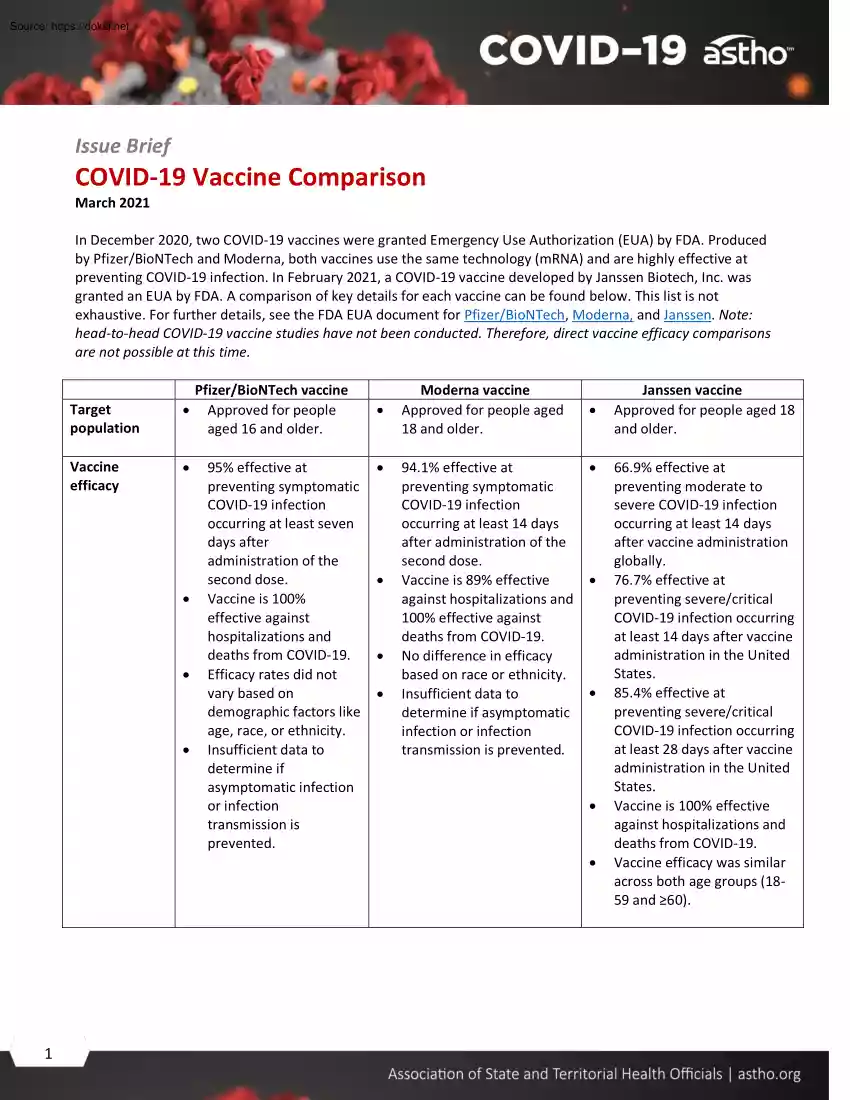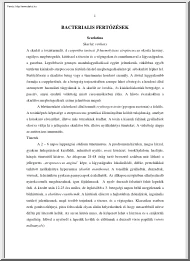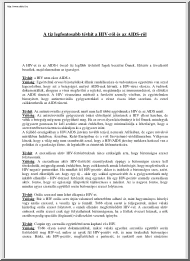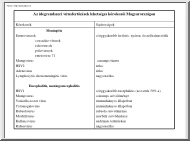Datasheet
Year, pagecount:2021, 3 page(s)
Language:English
Downloads:3
Uploaded:May 27, 2021
Size:813 KB
Institution:
-
Comments:
astho.org
Attachment:-
Download in PDF:Please log in!
Comments
No comments yet. You can be the first!Most popular documents in this category
Content extract
Issue Brief COVID-19 Vaccine Comparison March 2021 In December 2020, two COVID-19 vaccines were granted Emergency Use Authorization (EUA) by FDA. Produced by Pfizer/BioNTech and Moderna, both vaccines use the same technology (mRNA) and are highly effective at preventing COVID-19 infection. In February 2021, a COVID-19 vaccine developed by Janssen Biotech, Inc was granted an EUA by FDA. A comparison of key details for each vaccine can be found below This list is not exhaustive. For further details, see the FDA EUA document for Pfizer/BioNTech, Moderna, and Janssen Note: head-to-head COVID-19 vaccine studies have not been conducted. Therefore, direct vaccine efficacy comparisons are not possible at this time. Target population • Vaccine efficacy • • • • Pfizer/BioNTech vaccine Approved for people aged 16 and older. 95% effective at preventing symptomatic COVID-19 infection occurring at least seven days after administration of the second dose. Vaccine is 100% effective
against hospitalizations and deaths from COVID-19. Efficacy rates did not vary based on demographic factors like age, race, or ethnicity. Insufficient data to determine if asymptomatic infection or infection transmission is prevented. • • • • • Moderna vaccine Approved for people aged 18 and older. 94.1% effective at preventing symptomatic COVID-19 infection occurring at least 14 days after administration of the second dose. Vaccine is 89% effective against hospitalizations and 100% effective against deaths from COVID-19. No difference in efficacy based on race or ethnicity. Insufficient data to determine if asymptomatic infection or infection transmission is prevented. • • • • • • 1 Janssen vaccine Approved for people aged 18 and older. 66.9% effective at preventing moderate to severe COVID-19 infection occurring at least 14 days after vaccine administration globally. 76.7% effective at preventing severe/critical COVID-19 infection occurring at least
14 days after vaccine administration in the United States. 85.4% effective at preventing severe/critical COVID-19 infection occurring at least 28 days after vaccine administration in the United States. Vaccine is 100% effective against hospitalizations and deaths from COVID-19. Vaccine efficacy was similar across both age groups (1859 and ≥60). Vaccine administration • • • Possible side effects • • • Safety for pregnant/ lactating individuals • • 2 Two shots are required, delivered 21 days apart. Each dose contains 30 micrograms of vaccine. The vaccine must be diluted with saline before it is injected. There are five doses in a vial. After dilution, one vial contains six doses of 0.3 mL Vial labels and cartons may state that after dilution, a vial contains five doses of 0.3 mL • Most common side effects: injection site pain, fatigue, headache, muscle pain, joint pain, and fever. Side effects are more common after the second dose and are reported
more by younger adults. Rarer side effects: severe allergic reactions. • Limited safety data is available for individuals who are pregnant. Clinical trials to evaluate the safety of COVID-19 vaccine in pregnant people are in progress. In addition, vaccine manufacturers are monitoring data from individuals who received vaccine and became pregnant during clinical trials. Pregnant/lactating people should discuss the risks and benefits with their provider. • • • • Two shots are required, • delivered 28 days apart. Each dose contains 100 micrograms of vaccine. The vaccine is ready to • administer. There are 10 doses in a vial. It can be stored in a • refrigerator for 30 days and at room temperature for 12 hours. Most common side effects: injection site pain, fatigue, headache, muscle pain, joint pain, and fever. Side effects are more common after the second dose and are reported more by younger adults. • • • • Limited safety data is available for
individuals who are pregnant. Clinical trials to evaluate the safety of COVID-19 vaccine in pregnant people are in progress. In addition, vaccine manufacturers are monitoring data from individuals who received vaccine and became pregnant during clinical trials. Pregnant/lactating people should discuss the risks and benefits with their provider. • • One shot is required. Each dose contains 500 micrograms (0.5 mL) of vaccine. The vaccine is ready to administer. No dilution required. There are five doses per vial. Once punctured, vials can be stored in a refrigerator for up to six hours or up to two hours at room temperature. Most common side effects: injection site reactions, headache, fatigue, myalgia, nausea, and fever. Reactions were less commonly reported among participants 60 years of age and older. Rarer side effects: post vaccination syndrome and radiculitis brachial. Limited safety data is available for individuals who are pregnant. Clinical trials to evaluate the safety
of COVID-19 vaccine in pregnant people are in progress. In addition, vaccine manufacturers are monitoring data from individuals who received vaccine and became pregnant during clinical trials. Pregnant/lactating people should discuss the risks and benefits with their provider. Storage requirements • • • • Minimum purchase order 3 • Frozen vials are shipped • in thermal containers with dry ice. Vials should be removed from the thermal containers upon arrival and preferably stored in an ultra-low temperature freezer between -80°C to -60°C (-112°F to -76°F) until the expiry date printed on the label. On Feb. 26, FDA announced that it is allowing undiluted frozen vials of the PfizerBioNTech COVID-19 vaccine to be transported and stored at temperatures commonly found in pharmaceutical freezers at -25°C to -15°C (-13°F to 5°F) for up to two weeks. Vials must be kept frozen and protected from light until ready to use. The alternative temperature for storage of
frozen vials is not applicable to the storage of thawed vials before dilution or to the storage of thawed vials after dilution. Full details about storage parameters are available here. An order of the vaccine includes 975 doses. • Vials arrive frozen between -25°C to -15°C (-13°F to 5°F) and should be stored in the original carton to protect from light. Vials can be stored refrigerated between 2° to 8°C (36° to 46°F) for up to 30 days prior to first use. • An order includes 100 doses. • • Must be transported at refrigerated temperatures of 2 to 8°C (36 to 46°F). Can be stored for up to three months at refrigerated temperatures of 2-8°C (36 to 46°F). Minimum order is 100 doses (20 vials) and comes with 100 dose ancillary kits
against hospitalizations and deaths from COVID-19. Efficacy rates did not vary based on demographic factors like age, race, or ethnicity. Insufficient data to determine if asymptomatic infection or infection transmission is prevented. • • • • • Moderna vaccine Approved for people aged 18 and older. 94.1% effective at preventing symptomatic COVID-19 infection occurring at least 14 days after administration of the second dose. Vaccine is 89% effective against hospitalizations and 100% effective against deaths from COVID-19. No difference in efficacy based on race or ethnicity. Insufficient data to determine if asymptomatic infection or infection transmission is prevented. • • • • • • 1 Janssen vaccine Approved for people aged 18 and older. 66.9% effective at preventing moderate to severe COVID-19 infection occurring at least 14 days after vaccine administration globally. 76.7% effective at preventing severe/critical COVID-19 infection occurring at least
14 days after vaccine administration in the United States. 85.4% effective at preventing severe/critical COVID-19 infection occurring at least 28 days after vaccine administration in the United States. Vaccine is 100% effective against hospitalizations and deaths from COVID-19. Vaccine efficacy was similar across both age groups (1859 and ≥60). Vaccine administration • • • Possible side effects • • • Safety for pregnant/ lactating individuals • • 2 Two shots are required, delivered 21 days apart. Each dose contains 30 micrograms of vaccine. The vaccine must be diluted with saline before it is injected. There are five doses in a vial. After dilution, one vial contains six doses of 0.3 mL Vial labels and cartons may state that after dilution, a vial contains five doses of 0.3 mL • Most common side effects: injection site pain, fatigue, headache, muscle pain, joint pain, and fever. Side effects are more common after the second dose and are reported
more by younger adults. Rarer side effects: severe allergic reactions. • Limited safety data is available for individuals who are pregnant. Clinical trials to evaluate the safety of COVID-19 vaccine in pregnant people are in progress. In addition, vaccine manufacturers are monitoring data from individuals who received vaccine and became pregnant during clinical trials. Pregnant/lactating people should discuss the risks and benefits with their provider. • • • • Two shots are required, • delivered 28 days apart. Each dose contains 100 micrograms of vaccine. The vaccine is ready to • administer. There are 10 doses in a vial. It can be stored in a • refrigerator for 30 days and at room temperature for 12 hours. Most common side effects: injection site pain, fatigue, headache, muscle pain, joint pain, and fever. Side effects are more common after the second dose and are reported more by younger adults. • • • • Limited safety data is available for
individuals who are pregnant. Clinical trials to evaluate the safety of COVID-19 vaccine in pregnant people are in progress. In addition, vaccine manufacturers are monitoring data from individuals who received vaccine and became pregnant during clinical trials. Pregnant/lactating people should discuss the risks and benefits with their provider. • • One shot is required. Each dose contains 500 micrograms (0.5 mL) of vaccine. The vaccine is ready to administer. No dilution required. There are five doses per vial. Once punctured, vials can be stored in a refrigerator for up to six hours or up to two hours at room temperature. Most common side effects: injection site reactions, headache, fatigue, myalgia, nausea, and fever. Reactions were less commonly reported among participants 60 years of age and older. Rarer side effects: post vaccination syndrome and radiculitis brachial. Limited safety data is available for individuals who are pregnant. Clinical trials to evaluate the safety
of COVID-19 vaccine in pregnant people are in progress. In addition, vaccine manufacturers are monitoring data from individuals who received vaccine and became pregnant during clinical trials. Pregnant/lactating people should discuss the risks and benefits with their provider. Storage requirements • • • • Minimum purchase order 3 • Frozen vials are shipped • in thermal containers with dry ice. Vials should be removed from the thermal containers upon arrival and preferably stored in an ultra-low temperature freezer between -80°C to -60°C (-112°F to -76°F) until the expiry date printed on the label. On Feb. 26, FDA announced that it is allowing undiluted frozen vials of the PfizerBioNTech COVID-19 vaccine to be transported and stored at temperatures commonly found in pharmaceutical freezers at -25°C to -15°C (-13°F to 5°F) for up to two weeks. Vials must be kept frozen and protected from light until ready to use. The alternative temperature for storage of
frozen vials is not applicable to the storage of thawed vials before dilution or to the storage of thawed vials after dilution. Full details about storage parameters are available here. An order of the vaccine includes 975 doses. • Vials arrive frozen between -25°C to -15°C (-13°F to 5°F) and should be stored in the original carton to protect from light. Vials can be stored refrigerated between 2° to 8°C (36° to 46°F) for up to 30 days prior to first use. • An order includes 100 doses. • • Must be transported at refrigerated temperatures of 2 to 8°C (36 to 46°F). Can be stored for up to three months at refrigerated temperatures of 2-8°C (36 to 46°F). Minimum order is 100 doses (20 vials) and comes with 100 dose ancillary kits





